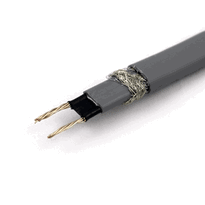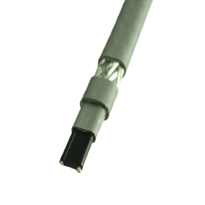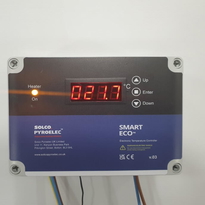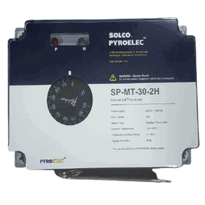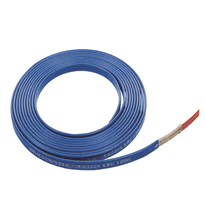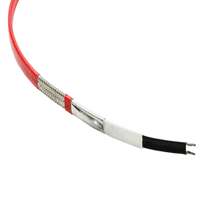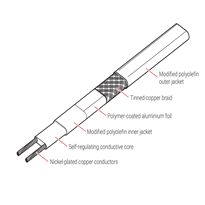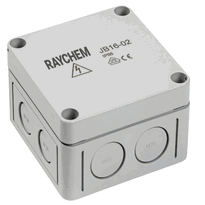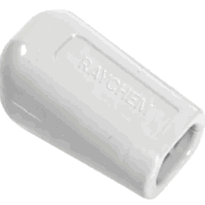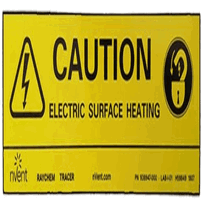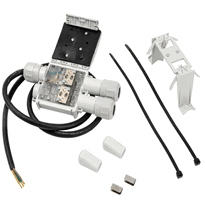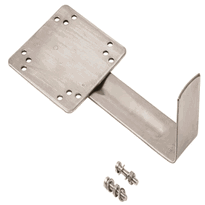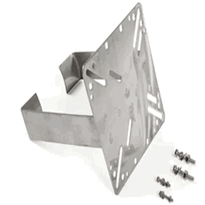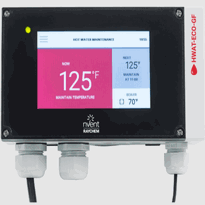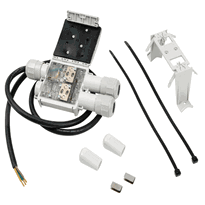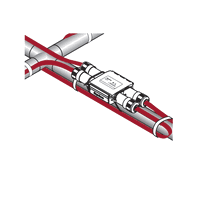Electric Pipe Heater
Electric pipe heaters utilise resistive heating elements, commonly heat trace cables, to convert electrical energy into heat along pipelines. These systems feature components such as corrosion-resistant cables, secure electrical connections, and moisture-resistant insulation engineered to operate safely at high temperatures. The heat produced transfers via conduction to the surface of the pipe, then disperses through convection or radiation depending on the surrounding environment.
Proper installation, safety protocols, and routine maintenance are vital for ensuring reliable operation. Ongoing monitoring and inspection help maintain performance and safety standards, preventing issues such as heat loss, electrical faults, or corrosion. By adhering to these practices, electric pipe heating systems can effectively protect pipelines from freezing and condensation, maintaining operational integrity in various UK climate conditions.
How Electric Pipe Heaters Operate
Electric pipe heaters operate through the use of an electrical heating element, usually in the form of a heat trace cable, which is installed along the length of the pipe to provide controlled heating.
The heating element comprises conductors encased in a resistive substrate that generates heat when electrical current flows through it, in accordance with Ohm’s law. These systems are supplied with voltage typically ranging from 110V to 277V, with the circuit designed to maintain specific heat outputs via terminal resistance at the cable’s end. Proper installation techniques ensure safety and efficiency. The resistive nature of the cable ensures that heat is produced evenly along its length, while electrical connections and splices are carefully managed to prevent inefficiencies. This configuration allows for reliable regulation and consistent pipe temperature control, which is essential for maintaining system integrity and operational safety. To enhance durability, many electric pipe heaters incorporate moisture-resistant elements suitable for outdoor applications.
Key Components and Construction
The primary component of electric pipe heaters is the heating element, commonly known as the heating cable, which converts electrical energy into heat through resistive heating. These cables typically consist of resistance wires coated with ceramics that are resistant to corrosion and high temperatures. This coating allows the cables to operate safely at temperatures reaching up to 1000°C. Understanding the R-value of insulating materials surrounding the heater can further optimize safety and efficiency. Depending on the application requirements, different types of cables are employed. For instance, series resistance cables feature a continuous resistance wire, while parallel resistance cables incorporate multiple resistive elements to distribute heat evenly. Some systems, such as impedance pipe heaters, utilize the pipe itself as the heating element, with low-voltage alternating current applied through specialised transformers. Manufacturing these components demands materials with high durability against moisture, corrosion, and mechanical stress, ensuring long-term reliability and efficient operation.
Heat Transfer Process
Heat transfer within electric pipe heaters occurs through several coordinated mechanisms, ensuring efficient and uniform heating along the length of the pipe. Firstly, the electric element within the heater acts as a heat source, converting electrical energy into thermal energy. This heat is transferred via conduction from the metallic surface of the heater to the surrounding pipe material. The efficiency of this process is enhanced when the heater is shaped to maximise contact—such as in coils or sheet formats—facilitating better heat transfer. The design of the heater also plays a crucial role in minimizing heat losses and ensuring even distribution. Secondly, conduction continues as heat moves from the pipe's surface to the fluid or gas surrounding it. The thermal conductivity of the pipe material significantly influences this transfer, ensuring the heat permeates evenly throughout the medium. Additionally, system insulation effectively reduces heat loss, supporting overall efficiency. Thirdly, convection plays a vital role in distributing heat throughout the medium within the pipe or adjoining systems. Whether natural convection—driven by temperature-induced density differences—or forced convection—using fans or pumps—air or fluid circulates around the pipe. This circulation reduces hot spots and promotes consistent temperatures along its length. Lastly, although less predominant at typical operating temperatures, thermal radiation can contribute to heat transfer. At higher temperatures, radiative heat transfer occurs between the heater and surrounding surfaces. This can be minimised using insulation or reflective coatings, which help to preserve overall heater efficiency by reducing heat losses. Advances in insulation materials further improve the overall thermal efficiency of electric pipe heaters. Together, these mechanisms—conduction, convection, and radiation—work synergistically to deliver consistent, uniform heating in electric pipe heaters, enhancing performance and energy efficiency in various industrial applications.
Common Applications in Industry
In industrial environments, electric pipe heaters are utilised across a diverse range of sectors that demand precise temperature regulation and dependable performance. These heaters are frequently employed in the petrochemical and chemical processing industries to heat corrosive liquids and viscous substances, ensuring optimal flow and preventing solidification. They play a crucial role in maintaining equipment safety and supporting regulatory compliance by ensuring accurate temperature control during chemical reactions and storage processes. Wattco Pipe Heaters, which are designed for indirect heating and engineered with supportive ceramics for high thermal resistance, are often preferred in such applications. Many of these systems are constructed with materials that meet European standards for safety and durability, ensuring they can withstand challenging operating conditions.
In the oil and gas sector, electric heat tracing is vital for preventing freezing within pipelines and vessels, particularly under low-temperature conditions. This ensures continuous flow and preserves the structural integrity of pipelines, thereby reducing the risk of damage or failure. The integration of innovative building physics principles in heater design enhances efficiency and longevity of the systems used in these environments.
The food, beverage, and bulk materials industries also benefit from electric pipe heaters, as they're essential for managing the temperature of thick or viscous products. Proper heating facilitates efficient pumping and processing, helping companies meet quality standards and optimise production workflows.
Furthermore, within power generation, these heaters assist in regulating temperatures in pipelines and safeguarding equipment against thermal cycling. This not only enhances operational efficiency but also contributes to extending the lifespan of critical infrastructure, ensuring safe and reliable power supply.
Electric pipe heaters thus serve as a vital component across various industries in the UK, supporting operational demands with precision, safety, and efficiency.
Safety Practices and Maintenance
Safety Practices and Maintenance for Electric Pipe Heaters
Ensuring the safe and reliable operation of electric pipe heaters requires strict adherence to safety practices and diligent maintenance procedures. Proper installation is fundamental; this begins with keeping cable ends dry and securely attaching heating cables using materials approved by the manufacturer. Using inappropriate fixing methods can compromise safety and system performance. Proper fixing methods help prevent loose connections which could lead to electrical faults or fires.
During operation, it's essential that cables are directly installed onto pipes without overlaps unless expressly permitted by the manufacturer. Overlapping or misplacement can lead to overheating or electrical faults. The use of fire-resistant insulation compatible with the system's operating temperatures is critical to prevent fire hazards and ensure system integrity. The vapor barrier foil-facing of fibreglass pipe insulation can also serve as an extra layer of fire protection in case of system malfunctions.
Routine maintenance should include annual inspections of the cables, with particular attention before the winter season. Inspections should check for cracked or deteriorated insulation, bare wires, or signs of physical damage. Any damaged components must be replaced immediately to prevent potential electrical risks. It's good practice to verify periodically that all securing materials and insulation remain intact and in good condition. Regular inspections help prevent unexpected failures. Additionally, periodic safety audits by qualified personnel can identify issues before they escalate.
Electrical circuits powering the heaters must be dedicated, properly grounded, and protected with suitable overcurrent protection devices. Proper earthing is vital to prevent electrical shocks, and protection devices help avoid equipment damage caused by electrical surges or faults. It is also important to ensure that circuit breakers and residual current devices (RCDs) are functioning correctly to quickly disconnect power if faults occur.
Adherence to manufacturer guidelines for both installation and maintenance is essential. Regular inspections, prompt repairs, and following safety protocols help prevent overheating, electrical arcing, and fire risks. Maintaining safety standards ensures the system remains safe for all users and prolongs the lifespan of the equipment. Leveraging compliant insulation materials such as fibreglass can also contribute to safer, more effective operation.
Conclusion
Electric pipe heaters operate through electrical resistance to generate heat, utilising key components such as heating elements, insulation, and control systems to ensure safety and efficiency. They transfer heat directly to pipes, preventing freezing and maintaining process temperatures across various industries. Proper maintenance, adherence to safety procedures, and understanding their construction are essential for reliable performance. Implementing these systems correctly optimises energy use and minimises risks, making electric pipe heaters a vital solution in industrial thermal management.








